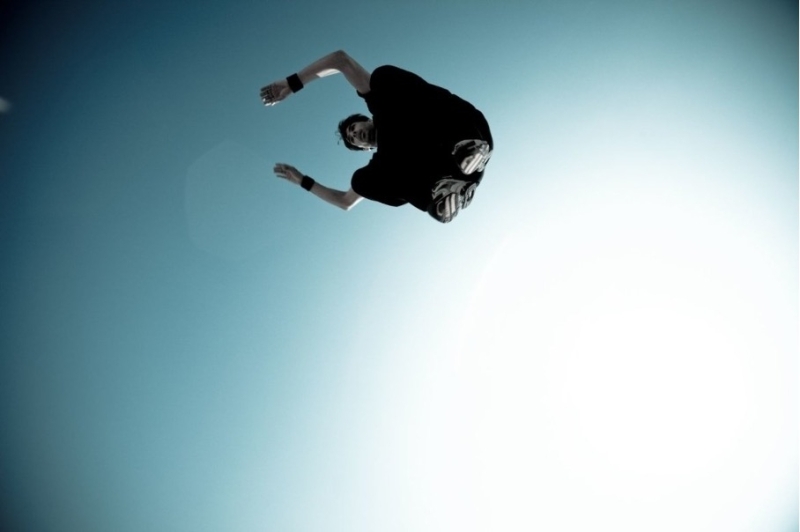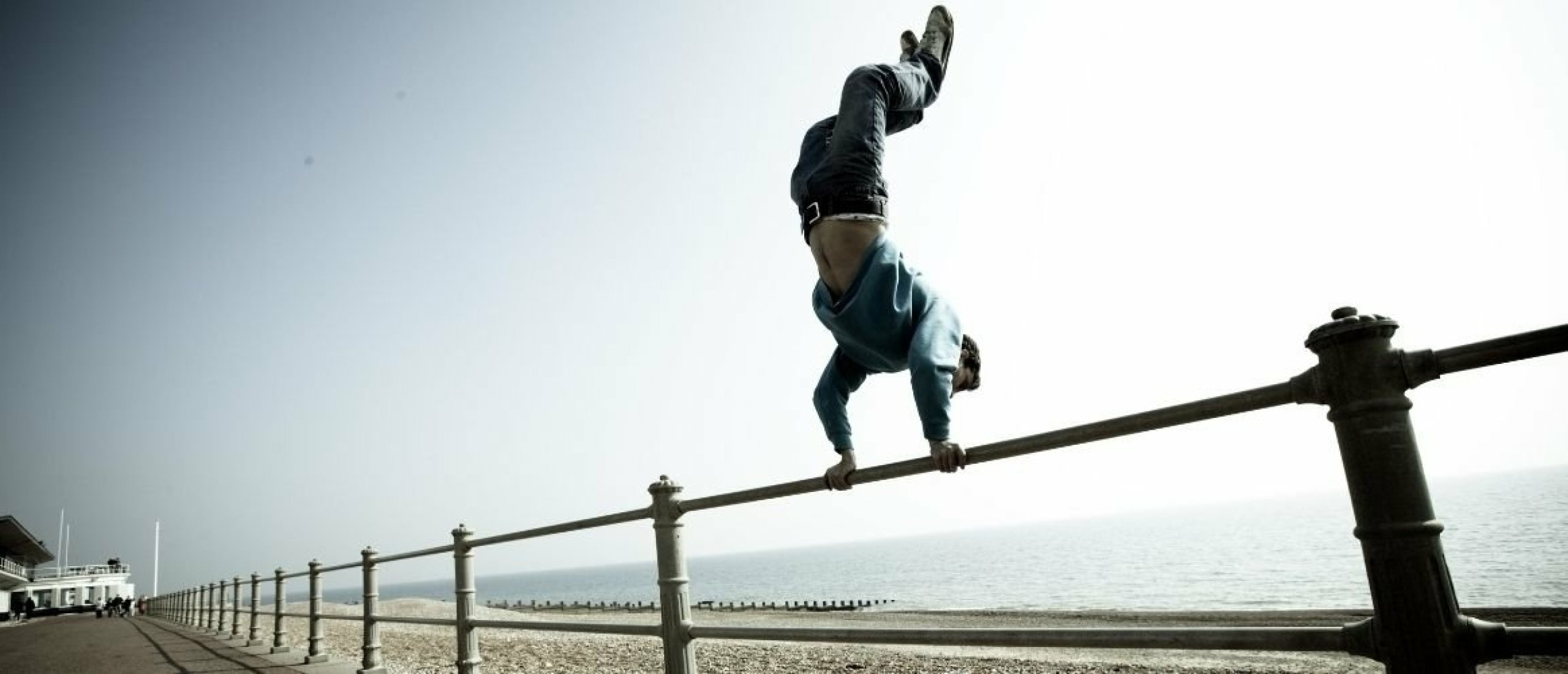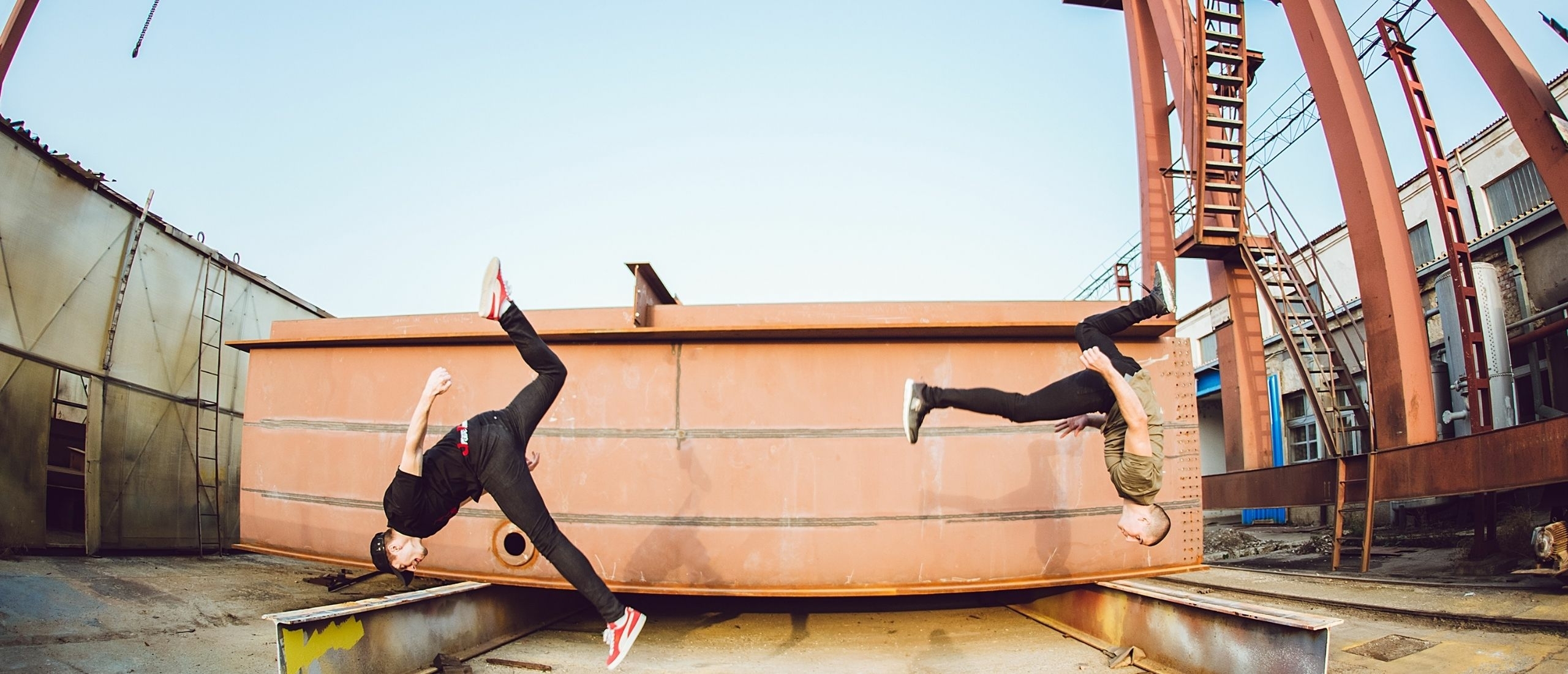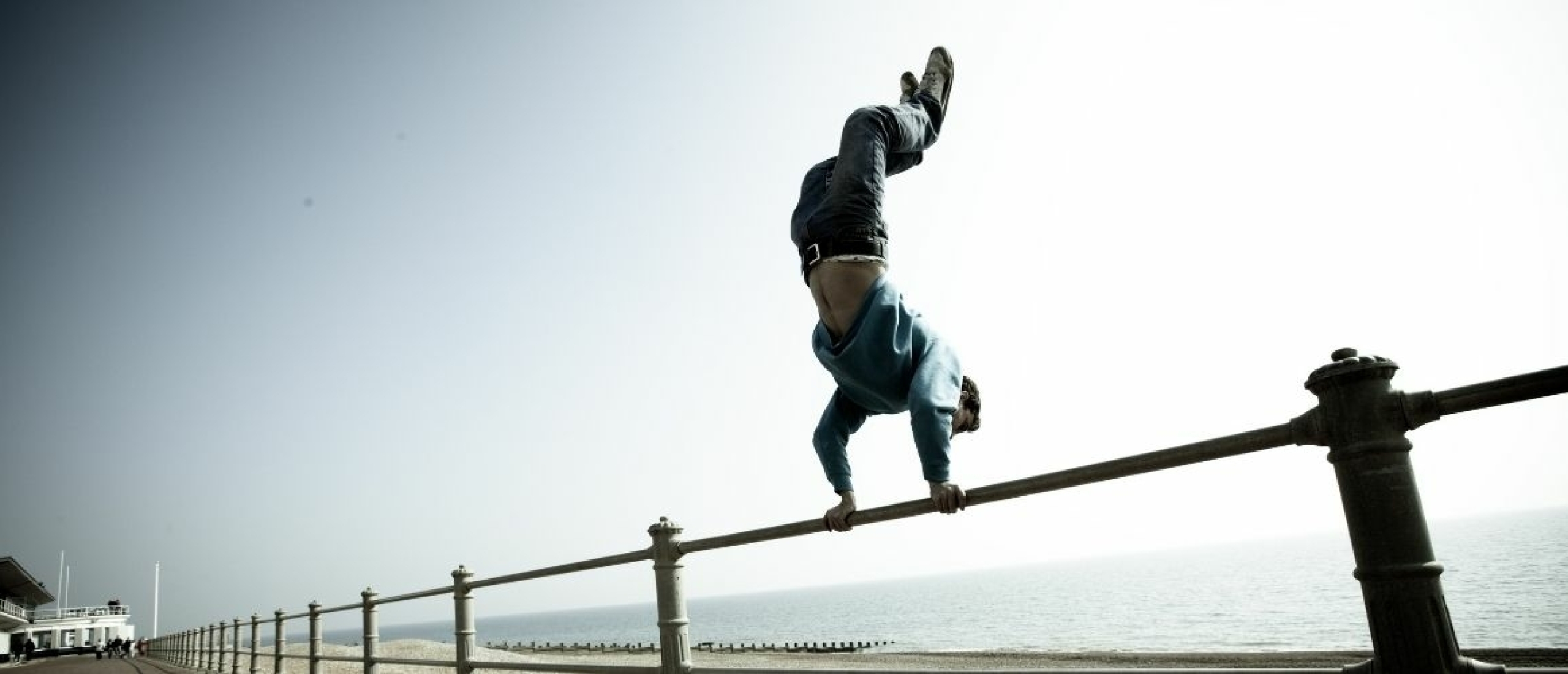More and more often, we get the question how it works with giving freerunning lessons outside. Specifically now that we are not allowed to enter the gymnasiums during corona times. And many organisations solve this by giving lessons outside. Is it safe to teach outside? What about insurance? What can I do outside? These are difficult questions, but fortunately they can be answered.

Is outdoor freerunning safe?
The answer to this question is different for everyone. I myself give outdoor lessons for absolute beginners to advanced and I find my lessons safe. Not only because I give the lessons myself, but also because I consider the outdoor situations to be basically safe, as long as it is not slippery as hell due to rainy weather.
When I teach outdoors, I pay attention to several things. As well as preparing my lesson in detail and making sure that I have checked the location for any glass, sharp edges or negligent maintenance, I also make sure that the participants are aware of the situation outside.
I prepare the athletes for the fact that there are no mats. But also that the top of a wall will not feel soft like a cupboard head.
For absolute beginners, this generally means that the first lesson is a little more cautious than they are used to. Only when I, as their coach, have seen that they have a certain skill do I make the form more exciting. I do this by adding speed, height or distance.
What about insurance?
The answer to this question also differs depending on the situation. If you teach for an association and you go/stand outside, it depends on whether or not you are affiliated to the KNGU. If you are, you can assume that if you have had training and you are giving lessons in the vicinity of the hall, you are insured. Of course, in every situation, an insurance company will still look at how things were done. And whether the coach has done everything to make the situation as safe as possible.
If you are active as a freerunning entrepreneur yourself, the situation is somewhat more difficult. At the moment there are no insurances that cover freerunning as a sport activity. PKFR.nl is currently working hard to get this done.
What can I do outside?
Everything is different outside'. That's what I often hear from colleagues who are normally indoors and teach a lot in a gym.
It is often forgotten that Freerunning/Parkour is a sport that originated outdoors. Boys who used their surroundings to shape their movements. Not the other way round. Especially the basic movements you see in freerunning; the precision, vaults, balance exercises, drops, wallruns, wallclimbs are movements you can do almost anywhere. Find an area in your surroundings where there is some leeway with height differences and you will soon be able to give shape to various exercises.
If you are unable to find a location where there are height differences, the participants themselves can serve as each other's obstacles. Precisions can be on the ground with the challenge of jumping past your water bottle which is moved a bit each round. In the grass, you can always roll and even Flips such as the backflip and frontflip can be practiced if there are no height differences.
Challenges
In addition, group competitions such as 'the floor is lava' are always a favourite in freerunning. Students have to get from one point to another without touching the ground. If one person touches the ground, everyone has to go back. As a variation on this, you can give a student 'lava shoes'. This pupil can help the other pupils or make a crossing point easier.
Another group challenge that I regularly do to strengthen the group is a challenge in which they can get from one point to another point. They are only allowed to use x amount of feet (and x amount of hands in case of hanging). Suppose the group is with 10 pupils, they all have 20 feet. A challenge could be to get to the other side with only 10 feet. The participants will soon realise that hopping makes this task successful. But what do they do if the assignment is with only 8 feet? Or 6?
A final tip
To keep it interesting, I have one last tip; Try not to let the participants do just one exercise and then join in again at the end of a row. A series of exercises or different movements in a row (a run), gives the participants much more of a Freerunning feeling and also offers them the space to give a bit of freedom and their own interpretation of the way they move. They spend less time waiting for a turn and will ultimately enjoy the lesson more and grow more.
Hopefully this will help you a bit in the times of the lockdown. As you know, if you get stuck with the lessons, you can always send me a message.
Have fun moving 🙂
Dave Hogenboom
SEO description:






